The HOLA are inoffensively tuned, provide a good value proposition, and, while no giant killers, are a suitable consideration for fledging ChiFI enthusiasts.
“Hola” (ho·la), Spanish for “hello,” is an interjection used to attract attention or to shout encouragement or exultation. The term 赫, the Japanese name for these IEMs found on the packaging, has connotations of “brightening, illumination, or sparkling.”
- Decent accessories
- Solid build, ergonomic
- Above average isolation
- Deep soundstage
- Fatigue-free, smooth tuning
- Organic timbre
- Not a technical monster
- Overly safe tonality
- They are sidegrades among the current budget champions
Is it reasonable to expect a fun and exciting sound with the HOLA’s Spanish and Japanese translations, which have undercurrents suggesting a vivid or scintillating tone? Read on to find out more!
Company Overview
Truthear was only conceived in 2022. Still, age is clearly not a limiting factor, as the company has hit two home runs with the Zero (a collaboration with the famed audio reviewer Crinacle) and the highly-acclaimed HEXA.
Truthear also recently released its first dongle DAC/amp, the SHIO.
Technical Specifications
- Form: IEMs
- Drivers: 1 x 11mm polyurethane suspension + LCP (liquid crystal polymer) dome composite diaphragm dynamic driver
- Impedance (Ohm): 28Ω土15% @1kHz
- Sensitivity (dB): 120dB/Vrms @1kHz
- Frequency Response (Hz): 20Hz – 20kHz
- Removable Cable: Y
- Cable: Oxygen-free copper cable
- Source Plug: 3.5mm TRS, single-ended
- Cup/Shell Plug: 0.78mm, 2-Pin
Packaging

In the box
- Truthear HOLA IEMs
- 3 pairs of narrow-bore silicone ear tips (S, M, L)
- 4 pairs of wide-bore silicone ear tips (S, M, L)
- Leatherette soft carry case
- Anime waifu card
Considering the HOLA retail below USD$20, the accessories are more than decent. There’s even an anime waifu mascot – her name is “Shiroi,” which means “White” in Japanese. The waifu card has other in-depth and salacious details on it!

Two types of silicone tips are provided. Unfortunately, there are no foamies included, but I can close one eye considering the HOLA retail for such little coin. The narrow-bore silicone tips boost bass quantity but compress the soundstage, whereas the wide-bore ones increase the upper frequencies and open up the soundstage.

I prefer the wide-bore tips to add some spice and openness to the treble and help offset their unadventurous tuning.
Cable
A stock oxygen-free copper cable is included, which is quite serviceable. It has a moderate thickness and is tangle-free, though microphonics are present. There’s a chin cinch for added stability during usage.
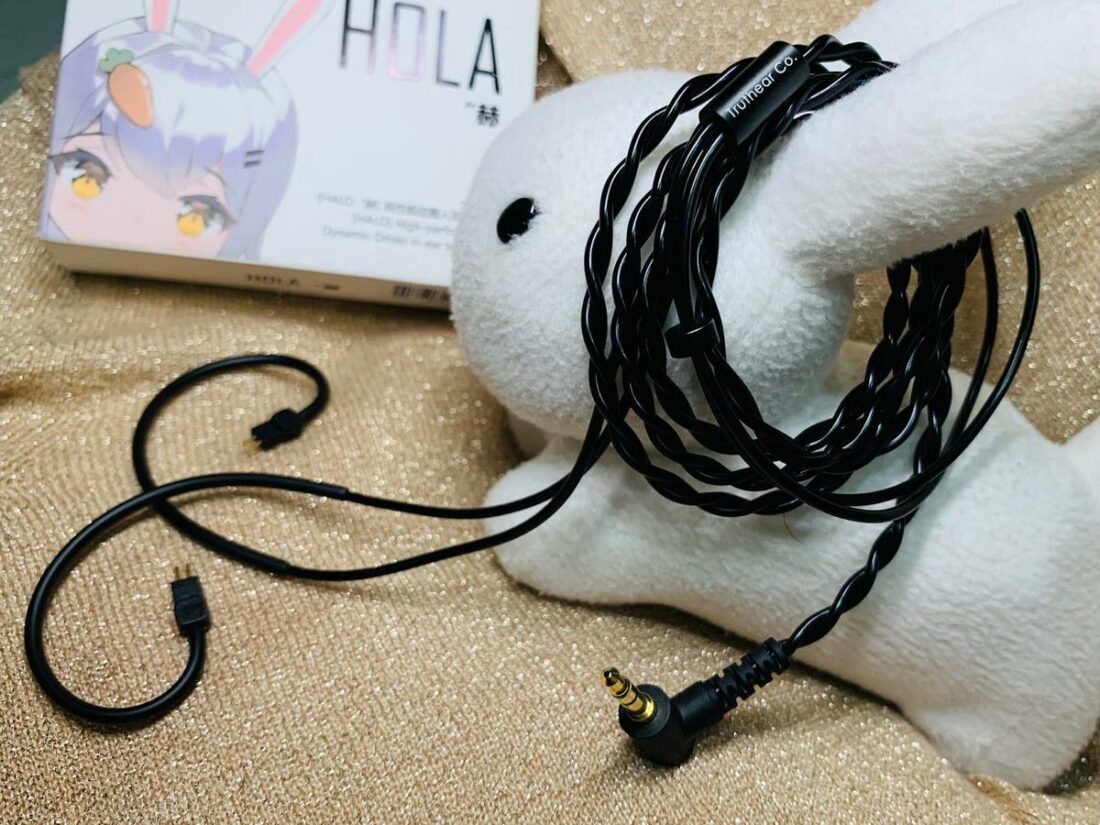
The distal terminals have ‘R’ and ‘L’ lettering to delineate the right and left connectors, respectively.
Case
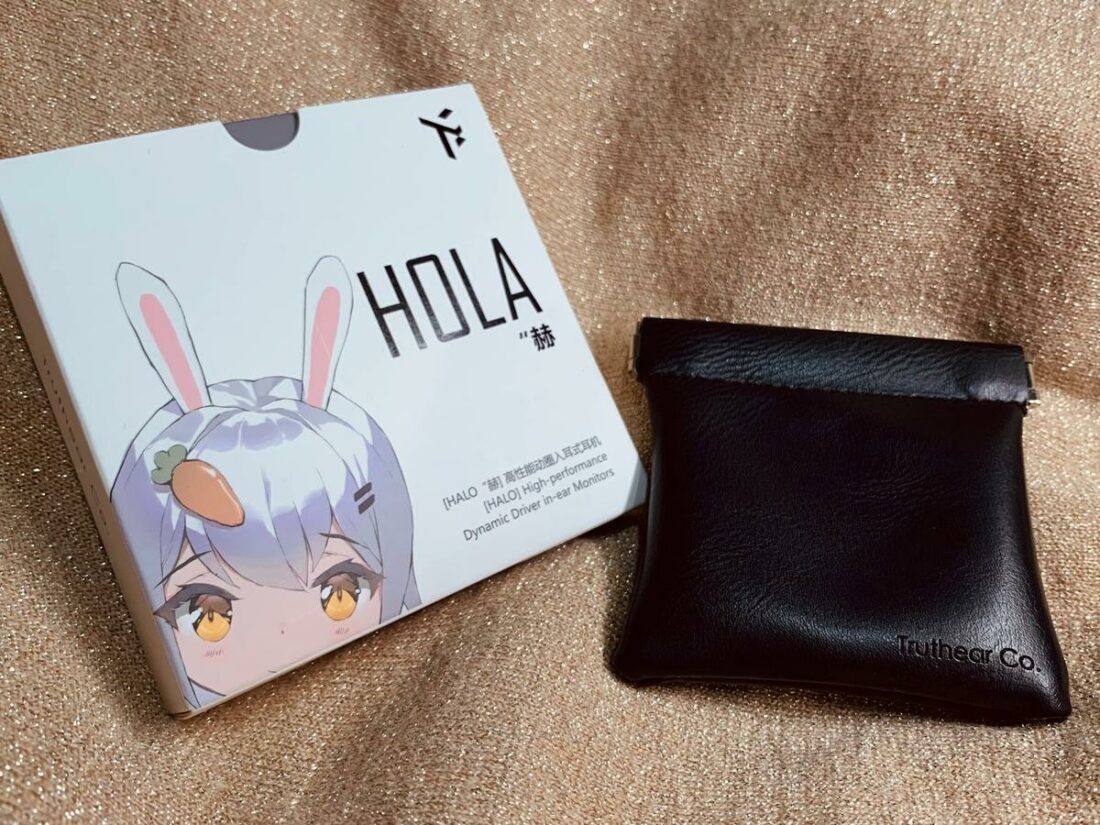
The leatherette case has a nifty magnetic clasp instead of a traditional button. It is quite elegant but might not withstand a crushing force. It may focus more on looks over functionality, as the storage space isn’t too large either.
Design
The housings feature a half-moon shape, with a hexagonal/star-like motif gracing the face plate.
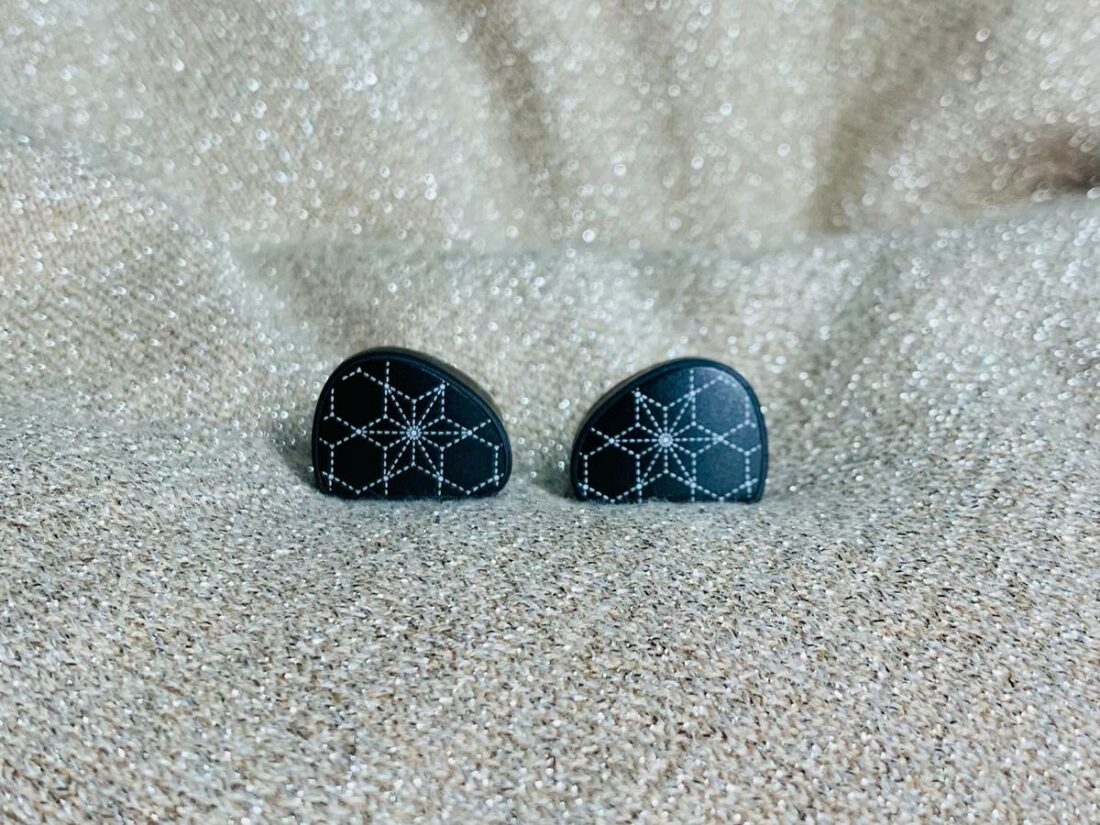
The HOLA’s acoustic cavity is DLP (digital light processing) 3D printed from HeyGears. This is pressure-casted, hand-grinded, and then spray-painted externally. After that, it is glued onto the face plate.
At the 2-pin connector socket, the shells have ‘L’ and ‘R’ lettering for the left and right earpieces.
Comfort
The HOLA are very light, and ergonomics are top-notch. A small concha protrusion adds some grip during usage. I did not experience any discomfort during longer listening sessions.
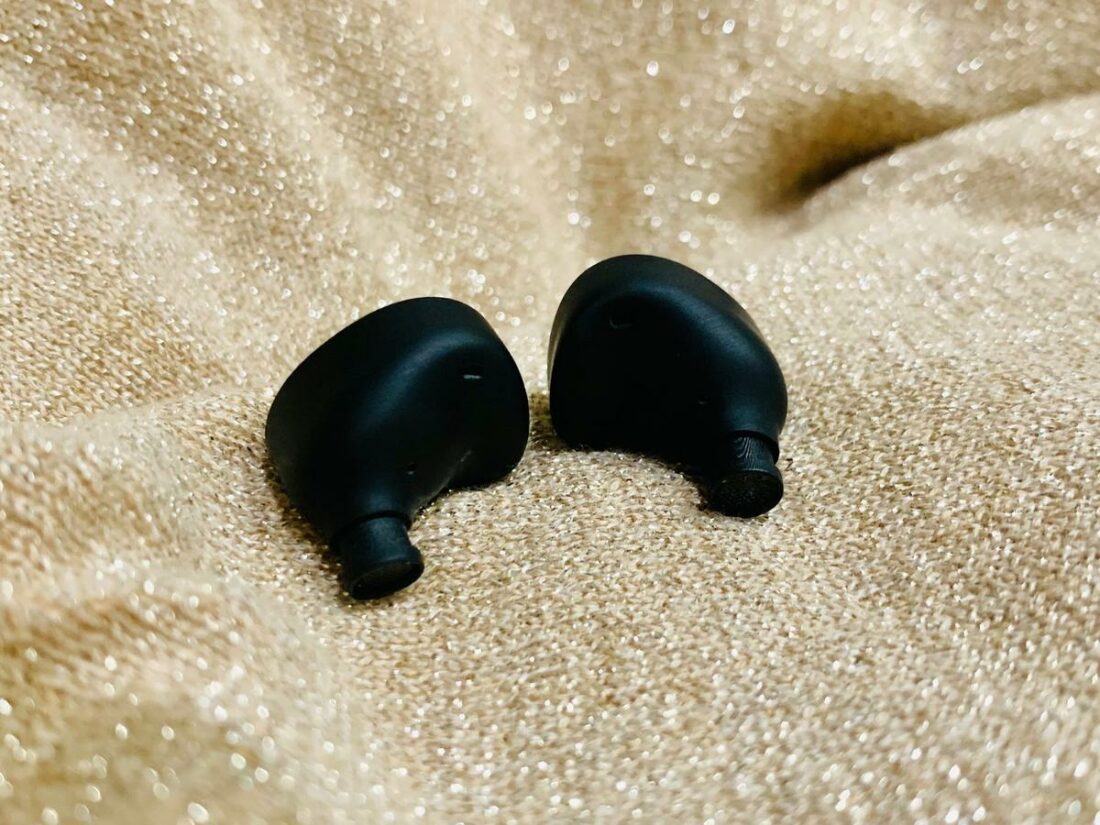
Despite being vented, isolation is above average. I did not encounter any driver flex, but YMMV, this may be dependent on ear anatomy and the type of ear tips used.
Internals
The HOLA utilize an 11mm polyurethane suspension composite liquid crystal dome diaphragm dynamic driver, with dual-cavity magnetic circuit N52 magnets.
Does size matter? Truthear claims the larger dynamic driver can provide punchier bass than smaller DDs.
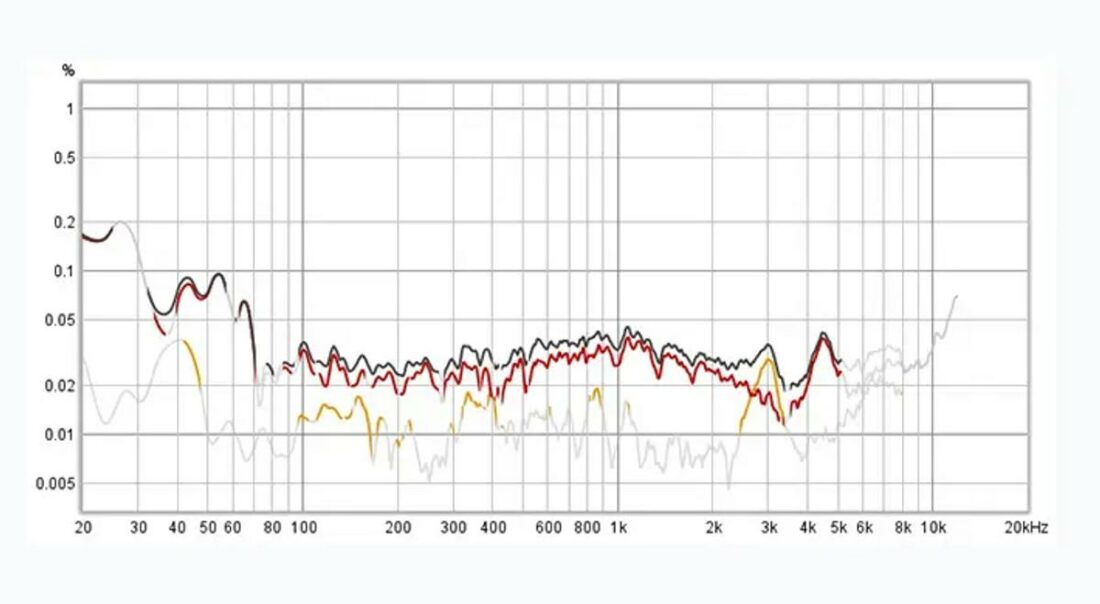
The advertised low distortion purportedly contributes to a dark background and allows the HOLA to take EQ like a champ.
Truthear HOLA Sound
The HOLA are moderately easy to drive – they will scale with amplification in terms of dynamics, soundstage, and bass tightness.
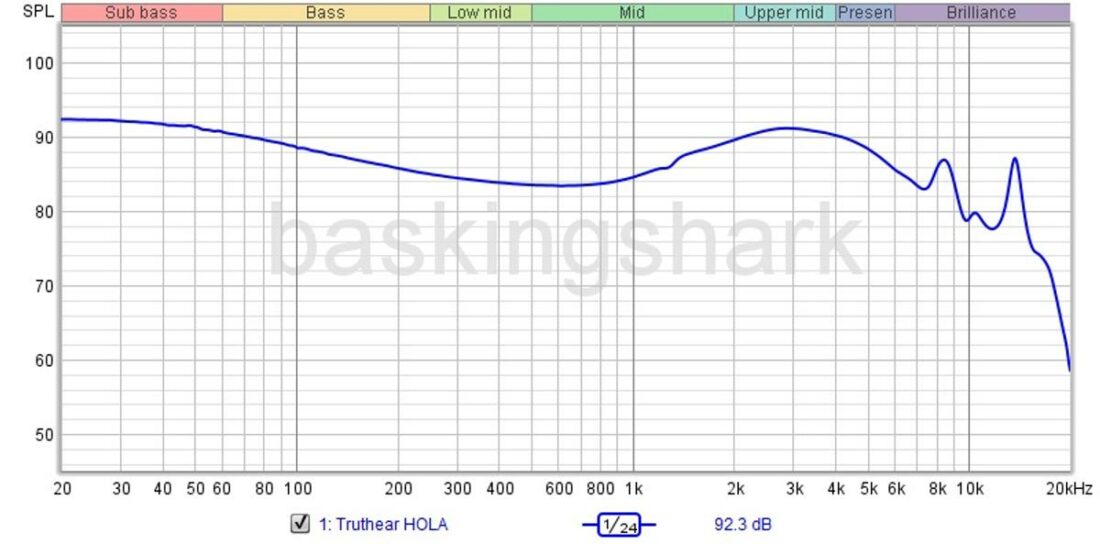
Timbre is pretty natural, with vocals and acoustic instruments sounding unadulterated. Aerophones have a nice vibration at the tail-end, and percussion instruments incorporate membranous rumble. Note weight is on the thicker side.
When compared against other ultra-budget single DD rivals, the HOLA are bang average in technicalities. Soundstage has good depth, though it does not have great height or width. Imaging is decent enough, but instrument separation, clarity, and micro-details are not class-leading. Edge definition and transients are blunted.
The HOLA have an L-shaped signature, with the bass having a boost compared to the higher frequencies.
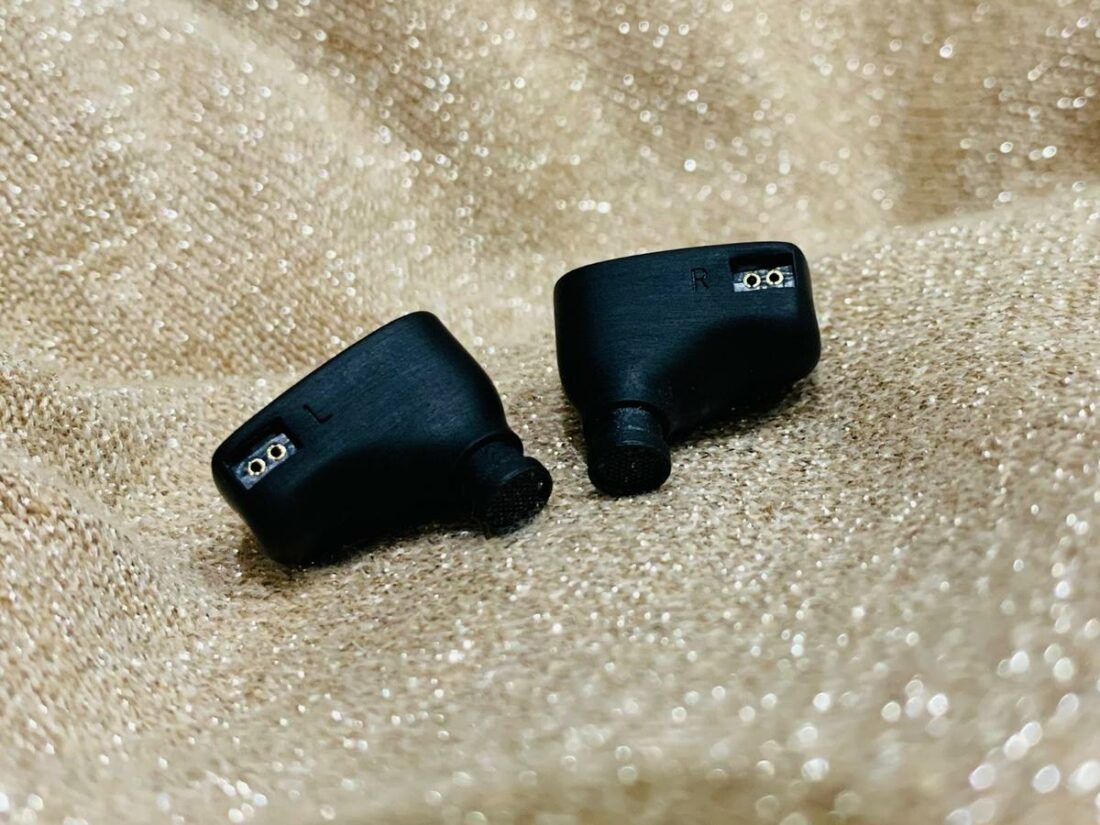
Bass
The HOLA are sub-bass focused, and the quantity is north of neutral but not at bonafide basshead levels. Sub-bass extends moderately, with some rumble. The mid-bass isn’t the most emphasized, so the HOLA does not fair that well with mid-bass focused genres such as EDM and hip-hop.
Bass texturing is below average, and can sound one-noted and undefined. Bass speed is moderate, with minimal mid-bass bleed.
Midrange
The lower midrange is a tinge recessed. Thankfully, this region is relatively transparent due to no marked mid-bass bleed impinging on it.
With a 6 dB pinna gain, the upper mids are not zealous, to say the least. In the mix, vocals lie in the background, so vocal lovers may want to consider an alternative set unless EQ is up your alley.
Treble
The lower treble continues on from the small upper midrange mound, but the upper treble drops off after that.
The HOLA are smooth as silk, and sibilance is absent. Our treble-sensitive brethren will like the tuning on offer, but treble-heads will likely grumble at the lack of pizazz and flair.
The HOLA are diametrically opposite from their Japanese name of 赫 (meaning bright or sparkling) and the upper treble borders on dark.
Comparisons
I compared the HOLA against other ultra-budget single DDs. Pure BAs, planars, multi-driver types, and hybrids are left out, as the different transducers have their own pros and cons.
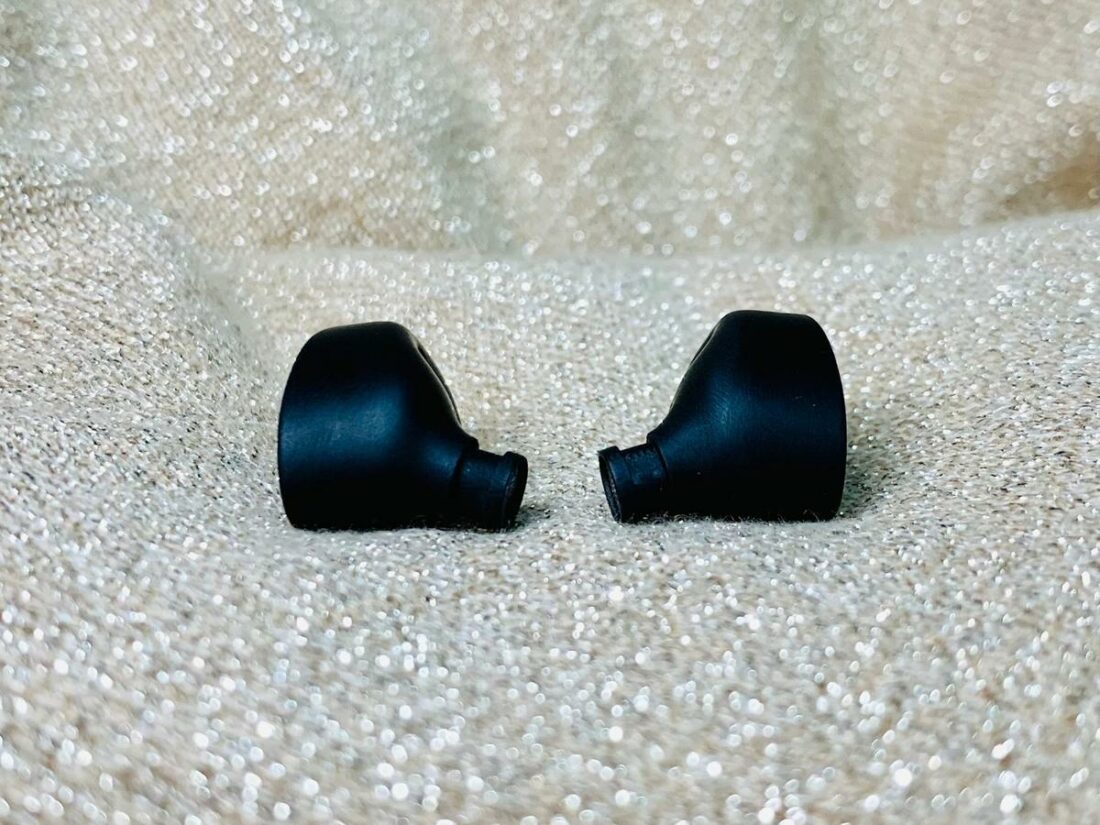
Vs. Kiwi Ears Cadenza
The Cadenza feature a warm Harman tuning. The Cadenza have more upper mids and lower treble, and vocals sound more forward.
These two adversaries are well accessorized and comfortable, with natural timbre. Both are not technical tour de forces but the Cadenza take the lead in imaging, micro-details, and instrument separation, albeit the HOLA have a more expansive soundstage.
I consider them sidegrades, as the Cadenza weigh in at almost double the retail price, and the HOLA have arguably a better price-to-performance ratio.
Vs. 7Hz Salnotes Zero
The Salnotes Zero are tuned neutral bright. They are more sterile and analytical, with a thinner note weight. The Zero have a more extended treble and are brighter in tone.
The Zero are harsher, more sibilant, and not as smooth as the HOLA. The Zero have less bass quantity, but the bass is tighter and faster.
Edge definition, layering, imaging, micro-detailing, and transients are superior on the Zero, though the HOLA have a deeper soundstage.
Timbre is less organic on the Zero, and the Zero are less comfortable due to perpendicular edges in the shells. In contrast, the HOLA are a cut above in timbral accuracy and fit.
Vs. Tangzu Wan’er
The Wan’er are a warm neutral set. They have marginally less bass and slightly more upper mids and treble than the HOLA.
Both pairs of IEMs have natural timbre, in keeping with their single DD roots, though the Wan’er are a hair better in technicalities.
They are both well accessorized and have good comfort, and I consider them sidegrades.
Where to Buy
Conclusion
What a time to be a budget audiophile! The HOLA join current sub-USD$20 luminaries such as the Tangzu Wan’er and Salnotes Zero as terrific, extremely affordable IEM options.
The HOLA provide an excellent price-to-performance ratio.
The ultra-budget segment has come a long way in recent months, with gear at this price bracket routinely giving USD$100 transducers of yesteryears a run for their money. However, one is bound to encounter compromises when fishing in this segment; it is just a matter of how much one is willing to compromise.
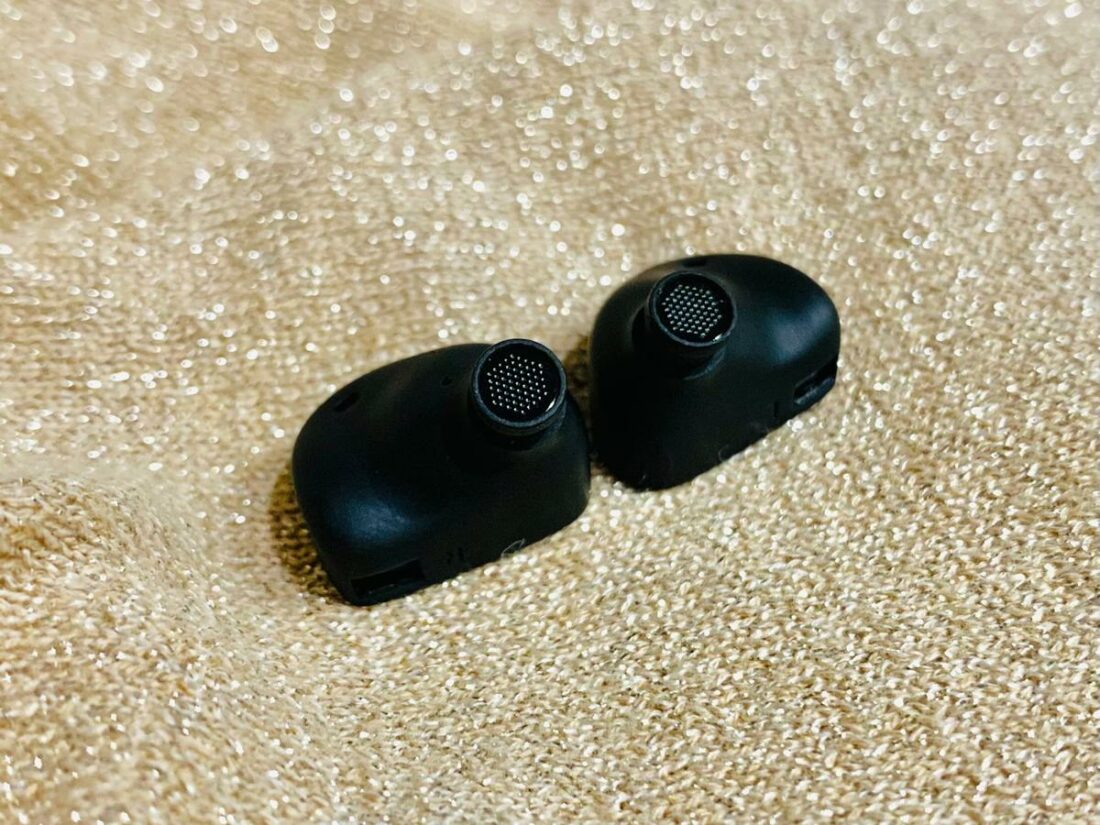
The HOLA are relatively well-accessorized, with a quality build, and above-average isolation. The conservative tuning, coupled with a snug fit, renders the HOLA suitable for long listening sessions, with nary an ounce of fatigue.
Ironically, the HOLA’s namesake is a misnomer – they are not bright nor sparkly. In fact, they veer towards the boring side of the spectrum, and treble-heads or micro-detail seekers best be seeking something else to ignite sparks of excitement.
Indeed, there may even be a cri de coeur for the HOLA lacking the technical panache to punch above their weight. Although the soundstage is quite expansive compared to other ultra-budget entrants, the HOLA have middling technicalities and fail to usurp higher-tier single DD contenders.
In the big scheme of things, the HOLA are more suited for beginners new to the ChiFI circuit. They fall in the category of being a decent sub-USD$20 daily beater but are no market disruptors.
For recalcitrant ChiFI consumers who have been around the block and back, I would advise you to keep your powder dry and save the twenty bucks for a more substantial upgrade down the line.
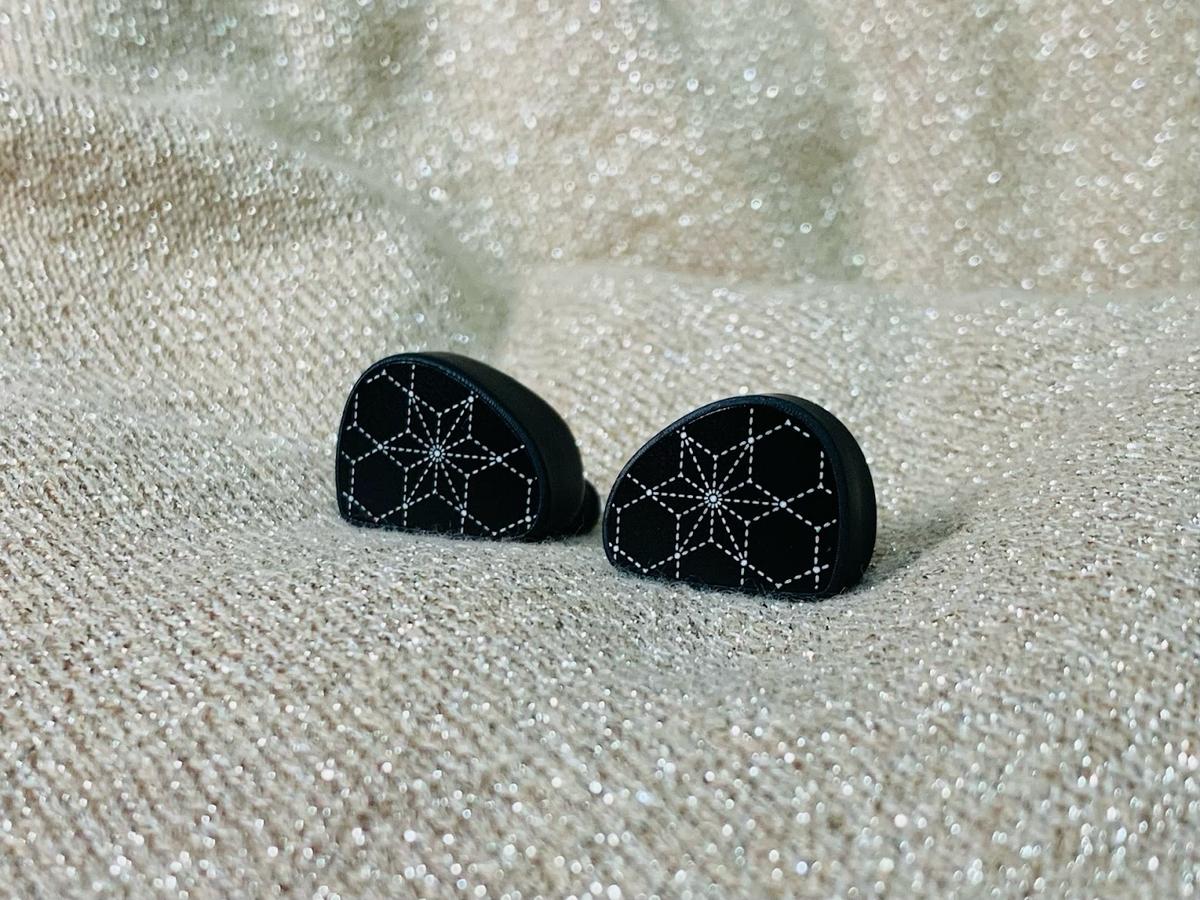
Hello,
I’m interested in how you would rank these compared to the CRA+, Chu and 7HZ Zero in terms of isolation. Three of them you describe as above average but could you narrow it more down?
Hi Sir
I do not have the CRA+, so can’t comment on that, but I hope one of the others can help you on that part.
For the other IEMs, I would rate their passive isolation as such (no. 1 = best isolation of the lot, stock tips used):
1) Salnotes Zero
2) Truthear HOLA
3) Moondrop CHU
Isolation is partially dependent on the shell design (eg vents and whether the shell housing covers the external ear). It is also dependent on eartips – generally foam tips and deep inserting silicone ones eg Spinfits, may increase passive isolation.
So perhaps if you desire more isolation in an existing IEM of yours, do explore tip-rolling with foam or Spinfits.
Hope this helps!
Among the Salnotes Zero, Truthear HOLA, and Tangzu Wan’er what would you rank them in terms of soundstaging and imaging?
Hi Sir
On A/B Comparisons:
In terms of soundstage: Wan’er > HOLA > Salnotes Zero
In terms of imaging: Salnotes Zero > HOLA > Wan’er
So as you can see, Wan’er gives the best soundstage though the imaging is nebulous. Salnotes Zero has the smallest soundstage though the imaging is more pinpoint.
Between the two, I rather take a smaller soundstage with accurate imaging than one big blob without clear positioning of instruments, but YMMV.
Hope this helps!
Hello,
I was confused to choose between Truthear HOLA or Tangzu Wan’er as my first IEM. Between these two IEMs, which one is suitable for listening to all kinds of genres?
Or do you have a recommendation of the most suitable IEM for listening to all kinds of genres with a budget under $25 for my first IEM? If you don’t mind, please put it in the top three list.
Thank you. Have a good day.